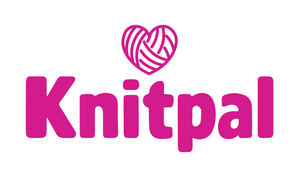
Knitting Needle Conversion Chart: Metric, US, UK & Japanese Sizes
If you’ve ever followed a knitting pattern from another country, you may have wondered:“Why don’t my needles match up with the pattern?” The confusion comes from different sizing systems—Metric (mm), US, UK, and even Japanese needle sizes.
This guide clears up the mystery and gives you a complete knitting needle conversion chart so you can easily find the right size for any project. Our handy, downloadable, knitting needle conversion chart and explanation makes this super easy!
Why Knitting Needle Sizes Can Be Confusing
Knitting needles aren’t standardized worldwide. Here’s why it can get tricky:
-
US sizes are numbered, sometimes with half-sizes.
-
UK sizes use an older system where higher numbers mean smaller needles.
-
Metric sizes measure the actual diameter of the needle in millimeters.
-
Japanese sizes also follow a numbering system, often used in lace or fine knitting patterns.
Because of this, it’s always smart to cross-check your needles against a chart—especially if you’re using international patterns.
👉 Related reading: How to Choose the Perfect Heel for Your Hand-Knitted Socks
How Knitting Needle Sizes Work
Knitting needle size refers to the diameter of the needle shaft, not its length or material. So whether you’re using bamboo, metal, or plastic needles, the size stays the same—it’s just the feel in your hands that changes.
The good news is that the size of the needles remains the same across straight, double-pointed needles (also called DPNs), and circular needles. So, for instance, a KnitPal 4mm straight knitting needle will have the same diameter than a KnitPal circular knitting needle. The lengths of the needles do differ and that can make a big difference depending on what you’re knitting. After all, you don’t want to use needles that are too short (and all your stitches keeps on slipping off) or too long (this can especially be a problem with a small project on long circular needles).
(Cable needles are not sold by size the same way as “conventional” needles are, and won’t be covered in this post. Basically, if you use thin needles, use a thin cable needle, and vice versa.)
Download your free knitting needle conversion chart here.
👉 If you’re just starting out, check out our beginner’s guide: Basic Crochet Stitches & Hooks for Beginners
Complete Knitting Needle Conversion Chart
Use this conversion chart whenever you need to match up knitting needle sizes across different systems.
| Metric (mm) | US Size | UK Size | Japanese Size |
|---|---|---|---|
| 2.0 mm | 0 | 14 | 0 |
| 2.25 mm | 1 | 13 | 1 |
| 2.5 mm | 1.5 | 12 | 2 |
| 2.75 mm | 2 | 12 | 3 |
| 3.0 mm | — | 11 | 4 |
| 3.25 mm | 3 | 10 | 5 |
| 3.5 mm | 4 | — | 6 |
| 3.75 mm | 5 | 9 | 7 |
| 4.0 mm | 6 | 8 | 8 |
| 4.5 mm | 7 | 7 | 9 |
| 5.0 mm | 8 | 6 | 10 |
| 5.5 mm | 9 | 5 | 11 |
| 6.0 mm | 10 | 4 | 12 |
| 6.5 mm | 10.5 | 3 | 13 |
| 7.0 mm | — | 2 | 14 |
| 8.0 mm | 11 | 0 | 15 |
| 9.0 mm | 13 | 00 | 15 |
| 10.0 mm | 15 | 000 | 16 |
(Save or pin this chart for easy reference!)
A Handy Tool: The Needle Gauge
If you’re ever unsure what size your needles are—especially older ones where the size has rubbed off—you can use a needle gauge. This is a flat tool with holes in different millimeter sizes. Just slide your needle in, and you’ll know exactly what you’re working with.
👉 Need reliable tools? Check out KnitPal Needles and Yarn on Amazon.
FAQs about Knitting Needle Sizes
Q1: What is the most common knitting needle size for beginners?
Most beginners start with 4 mm needles (US 6, UK 8) because they’re easy to hold and work well with worsted-weight yarn.
Q2: How do I know what size knitting needles my pattern uses?
Check the pattern’s abbreviations—some list US, some UK, and many now use metric. When in doubt, use a conversion chart.
Q3: What needle size is best for socks?
Sock knitting patterns usually call for 2.25–2.75 mm needles (US 1–2). Pair them with a smooth yarn like KnitPal’s Cotton to the Core DK.
Q4: Do bamboo, metal, or plastic needles affect size?
No—the size is only about diameter. The material just changes the feel and speed of your knitting.
Final Thoughts
Knitting across different countries doesn’t have to be confusing. With this conversion chart, you can confidently match up US, UK, Metric, and Japanese knitting needle sizes and keep your projects stress-free.
Keep this guide handy for your next project—and don’t forget to pair the right needle size with soft, high-quality yarns like KnitPal’s Woolen Delights, GentleBliss, or Cotton to the Core for the best results.
Download your free knitting needle conversion chart here.

